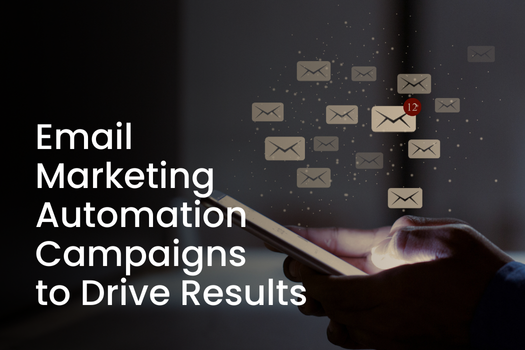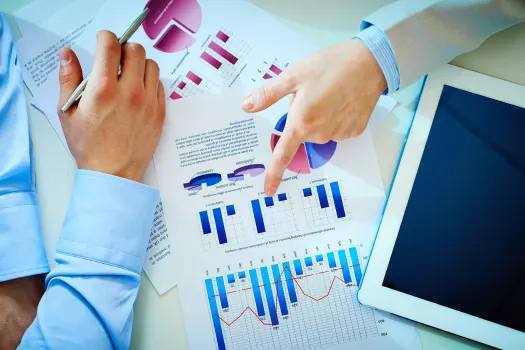Contents
- What is Email Marketing Automation?
- Benefits of Email Marketing Automation
- Top 20 Email Marketing Automation Examples
- 1. Welcome series
- 2. Abandoned cart recovery
- 3. Post-purchase follow-up
- 4. Re-engagement campaign
- 5. Birthday or anniversary emails
- 6. Product replenishment reminders
- 7. Onboarding sequence
- 8. Educational drip campaign
- 9. Seasonal or holiday promotions
- 10. Customer feedback and survey requests
- 11. Loyalty program updates
- 12. New product or feature announcements
- 13. Personalized product recommendations
- 14. Event invitation and reminder sequence
- 15. Lead nurturing workflow
- 16. Subscription renewal reminders
- 17. Referral program emails
- 18. Content upgrade delivery
- 19. Abandoned browse reminders
- 20. Customer milestone celebrations
- How to Implement Email Marketing Automation Examples?
- Best Practices for Email Marketing Automation Campaigns
- Conclusion
Email automation is a game-changer for marketers looking to engage their audience effectively and drive conversions.
By setting up automated email sequences, you can deliver the right message to the right person at the right time without manual intervention.
This post will discuss 20 powerful email marketing automation examples that can improve your marketing strategies and yield better results.
What is Email Marketing Automation?
Email marketing automation uses software and tools to send personalized, targeted, and timely emails to your audience based on predefined triggers, user behaviors, or specific actions.
Unlike traditional email marketing, where emails are sent manually, automation allows for a seamless and scalable approach to communication. By setting up workflows and rules, businesses can nurture leads, engage customers, and deliver content that resonates with their audience at the right time.
For example, when a user signs up for a newsletter, an automated workflow might send a welcome email immediately, followed by educational emails about your products or services over the next few days.
This type of automation saves time and ensures a consistent and tailored experience for your audience, highlighting the advantages of marketing automation services.
Benefits of Email Marketing Automation
-
Saves Time and Effort: Automation allows marketers to set up campaigns once and let them run, freeing up time for other strategic tasks. You can schedule workflows for months in advance, reducing repetitive work.
-
Improves Personalization: By leveraging customer data, automation lets you send personalized emails based on user preferences, behavior, and demographics. Personalization improves engagement and builds stronger relationships.
-
Increases Lead Nurturing: Automated workflows guide prospects through the sales funnel by providing relevant content at each stage, helping to turn leads into paying customers.
-
Enhances Customer Retention: Automated follow-ups, loyalty rewards, and re-engagement campaigns help maintain strong customer relationships, encouraging repeat purchases and long-term loyalty.
-
Boosts ROI: Targeted and timely emails lead to higher open rates, click-through rates, and conversions, delivering a better return on investment than manual campaigns.
-
Provides Actionable Insights: Marketing automation tools offer analytics and reports that help you track performance, optimize campaigns, and make data-driven decisions.
Top 20 Email Marketing Automation Examples
1. Welcome series
A welcome series is one of the most crucial email marketing automation examples you can implement. When a new subscriber joins your list, it's your chance to make a great first impression. Here's how to craft an effective welcome series:
-
Send an immediate welcome message
-
Introduce your brand and its values
-
Explain what subscribers can expect from your emails
-
Offer a special welcome discount or freebie
-
Guide new subscribers to your most popular content or products
Pro tip: Segment your welcome series based on how subscribers joined your list (e.g., newsletter signup, product purchase, or downloadable content) to provide more personalized information.
2. Abandoned cart recovery
Cart abandonment is a common challenge for e-commerce businesses. Implementing an abandoned cart email sequence can help recover lost sales. Here's a simple structure for this email marketing automation example:
First email: Sent 1-2 hours after abandonment, reminding the customer of their cart contents
Second email: Sent 24 hours later, addressing potential concerns and offering support
Third email: Sent 2-3 days later, providing a special discount or free shipping to incentivize purchase
Remember to include clear images of the abandoned products and a prominent call-to-action (CTA) to complete the purchase.
3. Post-purchase follow-up
After a customer makes a purchase, keeping the momentum is essential. A post-purchase email sequence can help improve customer satisfaction and encourage repeat business. Consider including:
-
Order confirmation and tracking information
-
Product usage tips or tutorials
-
Cross-sell recommendations for complementary products
-
Request for product reviews
-
Loyalty program invitation
4. Re-engagement campaign
Every email list has subscribers who become inactive over time. A re-engagement campaign can help win back these dormant subscribers. Here's an example sequence:
-
"We miss you" email with a special offer
-
Showcase of new products or features they've missed
-
Request for feedback on why they've become inactive
-
Final "last chance" email before removing them from your list
5. Birthday or anniversary emails
Celebrate your subscribers' special days with personalized emails. This email marketing automation example can include the following:
-
A heartfelt birthday or anniversary wish
-
Special birthday discount or gift
-
Exclusive access to a new product or service
-
Recap of their journey with your brand (for anniversaries)
6. Product replenishment reminders
Replenishment reminders can be a powerful way to drive repeat purchases for businesses selling consumable products.
Set up automated emails based on your products' typical usage time to remind customers to restock before they run out.
7. Onboarding sequence
If you offer a service or software product, an onboarding email sequence can help new users get the most out of your offering. Include:
-
Welcome message and account setup instructions
-
Step-by-step guides for key features
-
Tips and tricks for advanced usage
-
Invitation to join a community or attend a webinar
-
Check-in emails to ensure they're progressing smoothly
8. Educational drip campaign
Nurture your leads and showcase your expertise with an educational email series. This email marketing automation example could include:
-
Industry insights and trends
-
How-to guides and tutorials
-
Case studies and success stories
-
Answers to frequently asked questions
-
Invitations to webinars or online courses
9. Seasonal or holiday promotions
Set up automated email campaigns relevant to your business for major holidays or seasonal events. Plan these campaigns, considering:
-
Pre-holiday teasers and early bird offers
-
Last-minute gift ideas or special promotions
-
Post-holiday clearance sales
-
Season-specific product recommendations
10. Customer feedback and survey requests
Regularly gathering customer feedback is crucial for improving your products or services. Automate survey requests after key interactions, such as:
-
Post-purchase satisfaction surveys
-
Product review requests
-
Net Promoter Score (NPS) surveys
-
Feature requests or improvement suggestions
Get Your Message In Front Of More People
11. Loyalty program updates
If you have a loyalty or rewards program, keep members engaged with automated updates:
-
Points balance and redemption reminders
-
Exclusive offers for loyalty members
-
Tier upgrade notifications and benefits explanations
-
Birthday or anniversary bonuses
12. New product or feature announcements
Keep your subscribers informed about your latest offerings with automated announcement emails:
-
Teaser campaigns build anticipation
-
Launch day emails with special introductory offers
-
Early access invitations for loyal customers
-
How-to guides for new features
13. Personalized product recommendations
Leverage customer data to send tailored product recommendations:
-
Based on past purchase history
-
Inspired by items they've viewed on your website
-
Complementary products to recent purchases
-
"Back in stock" notifications for items they've shown interest in
14. Event invitation and reminder sequence
For businesses hosting events (online or offline), an automated invitation and reminder sequence can boost attendance:
-
Initial invitation with event details and benefits
-
Early bird registration reminders
-
This is the last chance to register emails
-
Event day reminders with important information
-
Post-event follow-up and feedback request
15. Lead nurturing workflow
Guide potential customers through your sales funnel with a lead-nurturing email sequence:
-
Introduction to your brand and unique value proposition
-
Educational content addressing their pain points
-
Case studies and social proof
-
Comparison guides highlighting your advantages
-
Special offer or consultation invitation
16. Subscription renewal reminders
For subscription-based businesses, automated renewal reminders can reduce churn:
-
Early renewal offer with a special discount
-
Reminder of subscription benefits
-
Last chance to renew before expiration
-
Winback campaign for expired subscriptions
17. Referral program emails
Encourage word-of-mouth marketing with an automated referral email sequence:
-
Introduction to your referral program and rewards
-
Regular reminders about the program
-
Celebration emails when a referral is successful
-
Updates on referral status and rewards earned
18. Content upgrade delivery
When subscribers opt in for a content upgrade (e.g., an ebook or whitepaper), automate the delivery process:
-
Immediate delivery of the promised content
-
Follow-up email with additional resources
-
Request for feedback on the content
-
Invitation to explore related products or services
19. Abandoned browse reminders
Similar to abandoned cart emails, set up reminders for products that visitors have viewed but not purchased:
-
Reminder of viewed products with images and descriptions
-
Related product recommendations
-
Limited-time offer to encourage purchase
-
Request for feedback if they're not interested
20. Customer milestone celebrations
Recognize and celebrate important customer milestones to foster loyalty:
-
First purchase anniversary
-
100th order celebration
-
VIP status achievement
-
Cumulative spending milestones
How to Implement Email Marketing Automation Examples?
Getting started with email marketing automation requires careful planning and execution. Here’s how to do it effectively:
-
Define Your Goals: Identify what you want to achieve with automation. Common goals include lead nurturing, increasing sales, improving engagement, or retaining customers.
-
Choose the Right Tools: Select an email marketing automation platform that fits your needs and budget. Popular tools include HubSpot, Mailchimp, ActiveCampaign, and Klaviyo. Evaluate features such as integrations, analytics, and ease of use.
-
Build Your Email List: Ensure you have a quality email list with the necessary segmentation. Use sign-up forms, lead magnets, and opt-in incentives to grow your list.
-
Segment Your Audience: Divide your audience into smaller groups based on criteria like demographics, behavior, purchase history, or engagement levels. Segmentation allows for more targeted and relevant communication.
-
Create Engaging Content: Develop compelling email content for each funnel stage. Include personalized subject lines, clear calls to action, and valuable information that resonates with your audience.
-
Set Up Workflows: Design workflows with specific triggers, such as a new subscriber, an abandoned cart, or a completed purchase. Map out the sequence of emails and actions to guide the user through their journey.
-
Test and Optimize: Run A/B tests on subject lines, email designs, and content to determine what resonates best with your audience. Continuously analyze metrics to refine your workflows.
-
Monitor and Adjust: Regularly review campaign performance to ensure your automation meets goals. Adjust strategies as needed to improve results.
Following these steps, you can successfully implement email marketing automation and achieve consistent, measurable results.
Best Practices for Email Marketing Automation Campaigns
Mastering email automation involves more than just setting up workflows. These best practices can help you maximize the effectiveness of your campaigns:
-
Focus on Personalization: Use dynamic content and merge tags to address recipients by name and tailor emails based on their preferences, behaviors, or past interactions.
-
Segment Your Audience Effectively: The more specific your segmentation, the better your results. Send emails that align with each segment’s unique needs and interests.
-
Avoid Over-Automation: While automation is powerful, sending too many automated emails can overwhelm recipients. Strike a balance to maintain engagement without annoying your audience.
-
Write Compelling Subject Lines: Your subject line is the first thing recipients see. Make it attention-grabbing and relevant to encourage higher open rates.
-
Design for Mobile: Ensure your emails are responsive and look great on all devices. A significant portion of users access emails on their smartphones.
-
Include Clear Calls to Action (CTAs): Make it easy for recipients to know what action to take next. Use clear, concise, and visually appealing CTAs.
-
Comply with Regulations: Follow email marketing laws like GDPR and CAN-SPAM by including unsubscribe links, obtaining proper consent, and protecting user data.
-
Analyze and Iterate: Use analytics to monitor performance metrics such as open rates, click-through rates, and conversions. Continuously improve your campaigns based on data.
-
Integrate with Other Channels: Use email automation with other marketing channels, like social media and SMS, for a more cohesive customer experience.
-
Test Regularly: Periodically review your workflows, test different strategies, and update your content to keep campaigns fresh and effective.
Incorporating these best practices ensures that your email automation campaigns remain effective, engaging, and compliant, helping you achieve sustained success over time.
Conclusion
Leveraging these 20 email marketing automation examples allows you to create more personalized, timely, and relevant communications with your audience.
This approach saves time, enhances engagement, increases conversions, and fosters long-term customer relationships.
Ready to take your email marketing to the next level? Saffron Edge offers comprehensive email automation solutions tailored to your business needs.
Our team of experts can help you design, implement, and optimize these automation strategies to maximize your ROI.
Get The Marketing Automation Toolkit
Frequently Asked Questions
What is email marketing automation?
Email marketing automation uses software to send targeted, personalized emails to subscribers based on specific triggers or schedules. It allows marketers to deliver the right message to the right person at the right time without manual intervention.
How can email automation improve my marketing results?
Email automation can improve your marketing results by increasing engagement, boosting conversions, saving time, and providing a more personalized experience for your subscribers. It ensures timely communication and allows you to nurture leads more effectively.
What are some essential examples of email marketing automation to start with?
Some essential email marketing automation examples include welcome series, abandoned cart recovery, post-purchase follow-ups, and birthday or anniversary emails. This automation can help you engage new subscribers, recover lost sales, and build customer loyalty.
How do I choose the right email automation tools?
When choosing email automation tools, consider factors such as ease of use, integration capabilities with your existing systems, reporting and analytics features, pricing, and scalability.
What tools are commonly used for email marketing automation?
Popular tools include HubSpot, Mailchimp, ActiveCampaign, Klaviyo, and Drip, all of which offer robust automation features.
Can small businesses benefit from email marketing automation?
Absolutely! Automation helps small businesses save time, scale their efforts, and compete effectively by providing customers with a professional and personalized experience.
What are the best practices for email marketing automation?
Best practices include segmenting your audience, personalizing content, testing campaigns, avoiding over-automation, and monitoring performance metrics regularly.
How do I measure the success of email marketing automation?
Key metrics include open rates, click-through rates, conversion rates, bounce rates, and ROI. Regularly analyze these metrics to refine your strategies.
Related Blogs
We explore and publish the latest & most underrated content before it becomes a trend.

Subscribe to Saffron Edge Newsletter!

Get The Marketing Automation Toolkit










